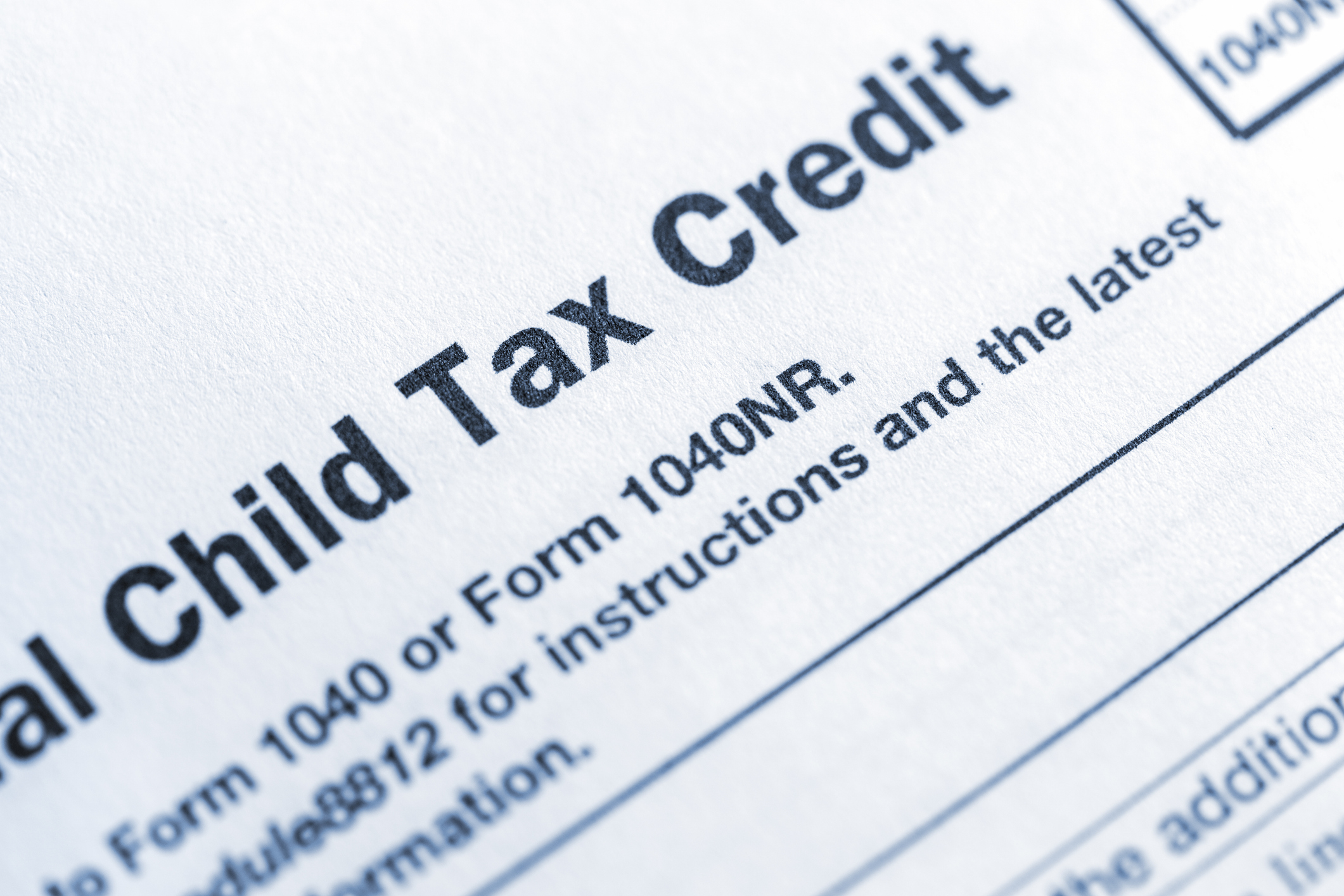
The federal child tax credit (CTC) allows eligible parents and caregivers to reduce their tax liability and might result in a tax refund. However, not everyone can claim the credit, and credit amounts can differ for those who can.
The child tax credit is based on income, filing status, the number of children, and whether the IRS considers your dependent a qualifying child.
Additionally, the IRS announced the annual inflation adjustment for the CTC, and other key family tax breaks for 2025. (Returns you'll file in early 2026)
Here is what else you need to know about the child tax credit.
Child Tax Credit Overview
What is the child tax credit?
The child tax credit is a key tax break that provides qualifying households up to $2,000 per child under 17. While your eligibility depends on your income, child's age, and other factors — you may be able to claim this benefit even if you aren't required to file a tax return.
- As a partially refundable tax credit, if the CTC exceeds taxes owed, families may receive up to $1,700 per child as a refund for the 2024 tax year. This portion is called the Additional Child Tax Credit.
- Taxpayers may qualify for the full amount for each child if they earn $200,000 as an individual filer or $400,000 for joint filers. The credit phases out completely for incomes above that threshold.
The child tax credit has reportedly supported as many as 40 million U.S. families each year in raising their children.
However, unless Congress acts, the federal child tax credit is set to revert to $1,000 per qualifying child in 2026. Additionally, the age limit for eligible children would decrease to 16. These changes would be due to the scheduled expiration of certain provisions in the Tax Cuts and Jobs Act (TCJA). (More on that below.)
Note: It's important to know that the child tax credit differs from the child and dependent care credit for working households. Other dependents of any age, including full-time students ages 19 through 24 may qualify for a non-refundable credit of up to $500 each. For more information, see Kiplinger's report Child and Dependent Care Credit: How Much Is It?
Child tax credit 2024
The full child tax credit amount for 2024
If you haven't filed already, the 2024 tax returns you're filing this 2025 tax season, have a CTC worth up to $2,000 per qualifying child under 17.
However, the credit is not a fully refundable tax credit. So, you cannot receive the entire $2,000 back as a tax refund, even if you have a $0 tax liability and qualify for the full credit amount.
But there is some good news. This tax break has a refundable portion (the additional child tax credit) — more on that below. If you haven't filed yet, due to inflation adjustments, the refundable amount is also slightly higher compared to a year ago.
- For the 2024 tax year, the refundable portion of the child tax credit is $1,700.
- For the prior tax year, only $1,600 was refundable.
Note: Remember, if you are eligible, you may get a refund of less than $1,700. That figure is the maximum amount of the refundable portion. How much you qualify for in tax credits depends on your annual income.
If you want to find out your CTC amount before you file, you can calculate this using the IRS' Interactive Tax Assistant tool online.
Additional child tax credit
Additional Child Tax Credit 2024
Your child tax credit can lower your tax liability this year by $2,000 per qualifying child. However, this tax credit isn’t refundable. That means if you owe less than $2,000 in taxes, you won’t get the unused portion of the credit as a refund.
However, the additional child tax credit (ACTC) allows you to receive up to a maximum of $1,700 per child as a refund this tax season. You can receive the maximum amount of the ACTC after your tax bill is reduced to zero.
Tax Planning: Child Tax Credit 2025
How much is the child tax credit for 2025?
The refundable portion of the CTC is $1,700 for the 2025 tax year (returns you'll file in early 2026).
That means the 2025 child tax credit amount remains unchanged from the previous year, or the taxes you'll soon file for the 2024 tax year.
For more information on IRS-adjusted amounts for key family tax credits see: New 2025 Child Tax Credit Announced: How Much Is It?
How to qualify for the child tax credit
Qualifying for the child tax credit
Not everyone will qualify for the child tax credit, and your income isn’t the only determining factor. The IRS also has seven guidelines you and your qualifying child must meet for the child tax credit.
The following must apply for your household to qualify:
- Age: The child must be under age 17 at the end of the year.
- Relationship: The child must be your son, daughter, stepchild, eligible foster child, brother, sister, stepbrother, stepsister, half-brother, half-sister, or a descendant of one of these (for example, a grandchild).
- Financial support: Children cannot provide more than half of their financial support during the year.
- Residency: Children claimed under the CTC must live with you for more than half the year.
- Dependent status: The child must be claimed as a dependent on your tax return.
- Citizenship: The child must have been a U.S. citizen, U.S. national, or U.S. resident alien during the tax year.
- Income: Parents or guardians can't exceed certain income limits. The credit amount is reduced depending on income until it phases out completely.
Child tax credit eligibility continued
As mentioned, the child tax credit amount you can expect on your refund will depend on your modified adjusted gross income (MAGI).
Once your income reaches a certain limit, the credit amount will decrease or completely phase out.
The credit amount will be reduced by $50 for every $1,000 above your income cap.
For instance, your child tax credit will begin to phase out once your MAGI exceeds:
- $200,000 for a single filer, head of household, or qualifying widower.
- $400,000 for those married filing jointly.
- $200,000 for those married, filing separately.
Child Tax Credit for non-filers:
Just as the CTC has a phase-out threshold, it also has a phase-in amount.
To qualify for the credit, families must earn at least $2,500 per year, and the CTC then phases in a rate of 15% per dollar earnings over that amount. Additionally, if you have three or more qualifying children, you may be eligible for other tax breaks like the Earned Income Tax Credit (EITC).
How to claim the child tax credit
Claiming your child tax credit
You can claim the child tax credit by entering your children or dependents on your federal income tax return (Form 1040). You’ll attach a completed Schedule 8812 (Credits for Qualifying Children and Other Dependents).
That IRS form will also help you determine how much of the CTC you’re eligible for and if you will receive additional tax credits. (Note: If you use tax software, the system will walk you through this with prompts. If you use a tax preparer, they will handle this for you.)
New Child Tax Credit Update
Child tax credit: What to expect in 2025 and beyond
The future of the child tax credit is likely to be a crucial point for Congress this year.
Years ago, the Tax Cuts and Jobs Act doubled the child tax credit to $2,000 per child, with a $1,700 refundable portion in 2024 phased in starting at $2,500 in earned income. It also temporarily increased the qualifying age of children or dependents up to 17.
Many TCJA provisions are set to expire by the year-end, including the expanded child tax credit.
Without action from Congress, the child tax credit will revert to $1,000 per child ages 16 and under in 2026. The credit would be refundable and phased in starting at $3,000 of earned annual income.
Will there be a new child tax credit?

President Donald Trump aims to reshape U.S. tax policy during his second term and has earmarked trillions of tax cuts that mainly benefit the wealthy in his blueprint known as 'one, big beautiful bill.'
With the end of the Tax Cuts and Jobs Act on the horizon, it remains to be seen if the Trump administration will prioritize the child tax credit's expansion or other tax cuts on the line.
That being said, during the presidential campaign, Trump's running mate, JD Vance floated an increased child tax credit. At the same time, Trump suggested that imposing global tariffs can address childcare affordability.
As Kiplinger reported, economists believe tariffs may cause U.S. households more financial strain.
As you prepare to file your taxes, make sure you are claiming all the tax credits and deductions you are entitled to. Consider the child and dependent care credit (CDCC) and other tax credits for families that can help lower your tax liability.
Note: The child and dependent care credit is aimed at working parents who need help with childcare costs so they can go to work or look for jobs. It covers expenses for daycare or after-school programs for children under 13 or dependents who can’t care for themselves. So, while both the CTC and CDCC provide valuable support, they tackle different challenges that families face.
Also, see what state child tax credits and deductions are available to help you and your family save money.







